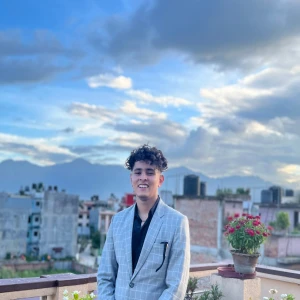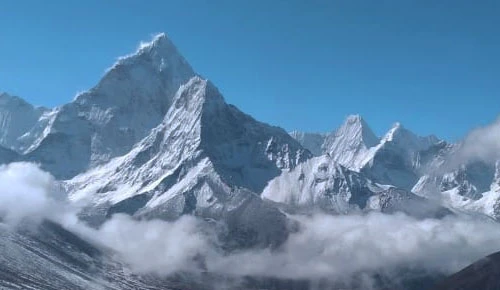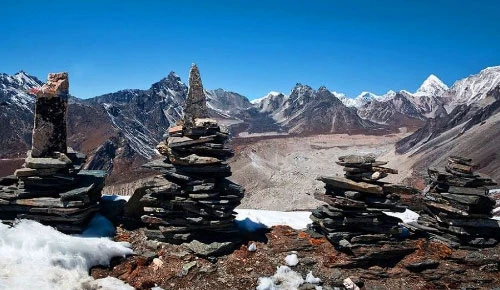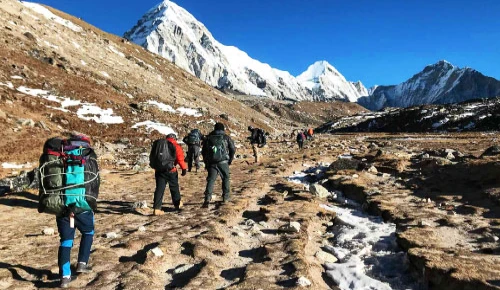Major Attractions of Bhutan
Bhutan, “The Land of Thunder Dragon,” is located in the lap of the Himalayas and is covered with Buddhist culture and Buddhist theists. Bhutan is Located in South Asia between two giant nations, China and India. Bhutan holds a territory of about 38,394 Square kilometers, which means it is a totally small nation with the happiest people in the world.
Bhutan used to be on the Silk Road before the time between India and China. The fact is that Bhutan is still a monarchic nation. The King of Bhutan is also known as the Dragon King, or Druk Gyalpo in Bhutanese.
Bhutan is surrounded by subalpine forests, and giant Himalayan peaks surrounded by greenery and swift rivers. Due to some of the best vegetation in the world, Bhutan is great for its geographical and wildlife aspects.
The Bhutan Flag is considered the symbol of National wealth. The dragon in Bhutan's flag is known as the Chinese dragon because it is the result of perfection. Bhutan is rich in cultural heritage, natural diversity, and unique attractions. Thimphu is known as the capital of Bhutan, but there are lots of other cities that have had greater historical significance, like Paro, Punakha, and Phuntsholing.
Bhutan has a strict policy toward tourism, its culture, and its environment. The visitor should have to pay a daily fee to cover accommodation, food, and a guide to visit Bhutan. The Kingdom of Bhutan has no limitation on exploring Bhutan’s Rich Culture and its natural beauties, along with spiritual sites. Bhutan has a great commitment to the conservation of its environment, making Bhutan eco-friendly.
The major agenda of this blog is to mention major attractions related to Bhutan, so Here are some major attractions in Bhutan.
Table of Contents
Paro Taktsang (Tiger Nest)
Tiger Nest is a fearful destination Located at the upper cliff of Paro Valley in Bhutan, As mentioned in Buddhist scripts, Guru Rinpoche, also known as the second Buddha, came there for meditation for 3 years, 3 months, 3 weeks, 3 days, and 3 hours. It is called Tiger Nest because Guru Rimpoche rode a mythical tigress to arrive there. Guru Rimpoche was the first person to introduce Buddhism to Bhutan.
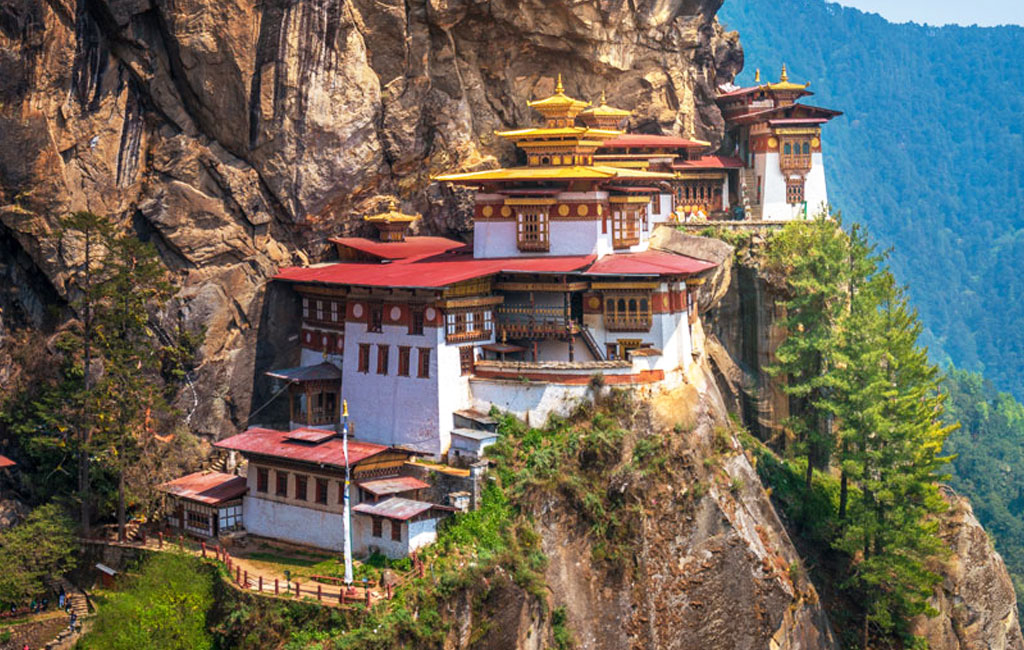
Later on, Devotees of Guru Rimpoche constructed the monastery over the cave where Guru Rimpoche meditated. The monastery is a great symbol of the art and devotion of the Bhutanese people towards Guru Rimpoche. Visiting Tiger Nest is a great experience of spirituality and architectural brilliance.
Punakha Dzong
Punakha Dzong was constructed under the supervision of Ngawang Namgyal in 1637–1638. The dzong is where the sacred relics of the southern Drukpa Lineage of the Kagyu school of Tibetan Buddhism are kept. These include the Rangjung Kasarpani, the holy remains of Ngawang Namgyal, and the Tertoen Pema Lingpa.

Punakha Dzong is the second-largest Dzong in Bhutan and is Known as one of the oldest Dzongs in Bhutan Dzong stands for the place where they study Buddhist scripts and manuals under the supervision of gurus. Punakha Dzong has majestic structures and designs. Punakha Dzong is also known as Pungthang Dewa Chhenbi Phodrang in Bhutanese. The place is meant to be the Palace of Great Happiness, or Bliss.
National Memorial Chorten
The National Memorial Chorten, located in Thimphu, the capital of Bhutan, is a significant religious and cultural monument. Built in 1974 in memory of the third king of Bhutan, King Jigme Dorji Wangchuck, it stands as a prominent example of Bhutanese architecture and Buddhist spirituality.

The chorten, or stupa, is a white, ornate structure adorned with intricate carvings and golden spires. It serves as a place of worship, meditation, and reflection for both locals and visitors. It is a significant landmark in Bhutan's capital city because of the serene and spiritual atmosphere that prayer wheels and lush gardens surround it with.
Buddha Dordenma Statue
The Buddha Dordenma statue in Thimphu, Bhutan, is an awe-inspiring religious landmark and one of the world's largest Buddha statues. This majestic statue measures 169 feet (51.5 meters) in height and is made of bronze and gold leaf. It was built to commemorate the centennial of Bhutan's monarchy and represents the substance of Bhutan's predominant religion, Vajrayana Buddhism.

The Buddha Dordenma offers panoramic views of the neighboring Himalayan mountains and the Thimphu Valley. There are 125,000 miniature Buddha statues contained within the statue, adding to its spiritual significance and making it a sacred and revered site for Buddhists and travelers.
Punakha Suspension Bridge

Phobjikha Valley
Phobjikha Valley, nestled in the heart of Bhutan, is a pristine and picturesque glacial valley renowned for its natural beauty and cultural significance. This serene valley sits at an altitude of 3,000 metres (9,800 feet) above sea level and is known for its stunning landscapes, including lush forests, tranquil marshlands, and snow-capped mountains.
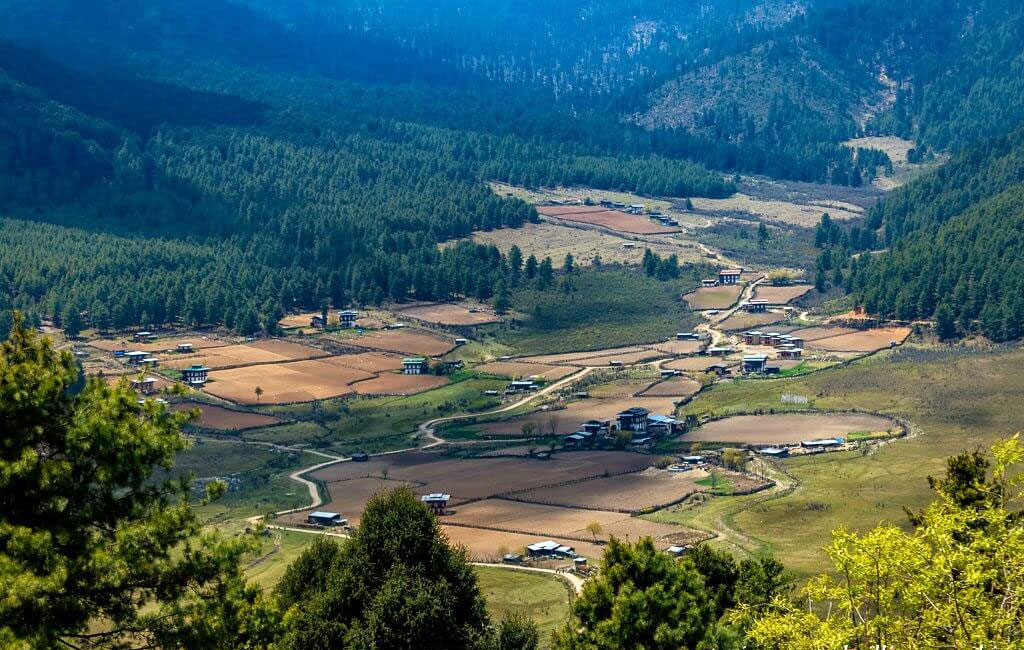
It's a designated conservation area for the endangered black-necked crane, which migrates here during the winter months, making it a crucial site for bird enthusiasts and nature lovers. Phobjikha Valley is also home to several monasteries, including the Gangtey Monastery, adding to its cultural and spiritual charm. Visitors come to this valley to experience its pristine environment, observe wildlife, and immerse themselves in Bhutan's rich cultural heritage.
Thimphu
Thimphu is known as the capital City of Bhutan. Having a unique and vibrant reflection of tradition and modernity. Thimphu is located on the western side of Bhutan, near the Wang Chu River. Thimphu is rich in its geographical landscape, including hills and mountains. Thimphu is the largest city with the largest population in Bhutan.

Thimphu has a High number of monasteries, Temples, and cultural infrastructure. Thimphu has a couple of Nearby attractions for visitors like Tashichho Dzong, Memorial Chorten, Buddha Dordenma, Changangkha Lhakhang, and crafts markets. Thimphu has great hotels, restaurants, and shops for visitors and locals.
Bhutanese Festivals
Bhutan has lots of festivals to celebrate in a year as per the Bhutanese calendar, which has its own authenticity. Some of their major festivals include Teschu, which is one of the major festivals and is celebrated according to their city. The main agenda of Teschu celebrations is to invoke their divine gods. The Jambay Lhakhang Drup Festival is another major festival in Bhutan. They perform the Naked dance, fire dance, and mask dance over there for 4 days.

Wangdue Phodrang Tshechu is another festival where they perform the Dance of OX, and another is about the Haa Summer Festival, which is performed in different cultural heritages, religions, and sports in Bhutan. It is done for the nomads of Haa Valley. These are the major festivals in Bhutan.
Bhutanese cuisine
Bhutanese food takes you on a wonderful trip through tastes in a unique Himalayan setting. Bhutanese people eat a lot of red rice and hot meals like Ema Datshi, which is made of cheese and chili peppers. Momos, which are tasty dumplings, are a popular snack, and Phaksha Paa, which is a filling pork stew, is great when you want something rich and hot. Kewa Datshi, which is potatoes in cheese sauce, is a meal that vegetarians can enjoy.

Bhutanese food has items like yak meat and spicy spices that show the impact of Tibet and India, which are close by. Bhutan's food customs say a lot about its rich culture and beautiful scenery.
Conclusion
In conclusion, Bhutan is full of natural treasures, natural beauty, and cultural beauty that are waiting to be discovered. With its stunning scenery, diverse wildlife, cultural richness, and outdoor activities, it offers an unforgettable experience for travelers. By planning your trip carefully and respecting local customs, you can have a memorable and enriching experience while traveling in Bhutan.




